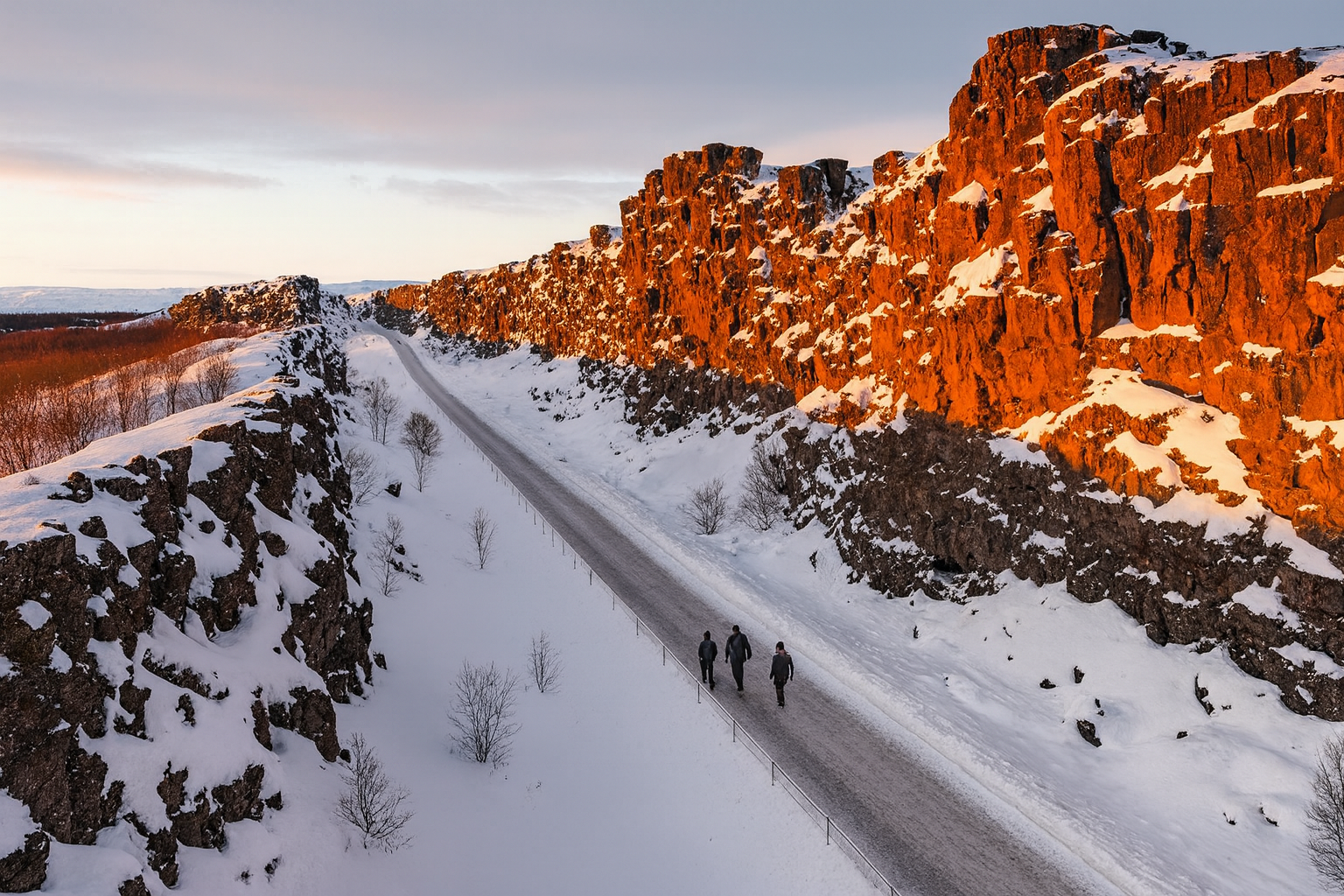Thingvellir National Park: Where History Meets the Earth’s Living Edge
In the heart of Iceland’s Golden Circle lies a place where the land itself tells stories — of shifting continents, ancient governance, and the enduring relationship between people and nature.
Þingvellir National Park, a UNESCO World Heritage Site since 2004, is more than just a scenic expanse of rift valleys and volcanic rock. It is a meeting ground of geological forces and human history, a place where the past and present merge in one breathtaking landscape.
A Rift Between Continents
Þingvellir sits directly atop the Mid-Atlantic Ridge, where the North American and Eurasian tectonic plates slowly drift apart. Nowhere else on land is this rift as visible and accessible. Deep fissures, carved by millennia of seismic shifts, cut through the park’s lava fields. Among these is Silfra, a submerged chasm filled with glacial meltwater so clear it offers over 100 meters of visibility — a dream for divers and snorkelers. Here, one can quite literally swim between continents.
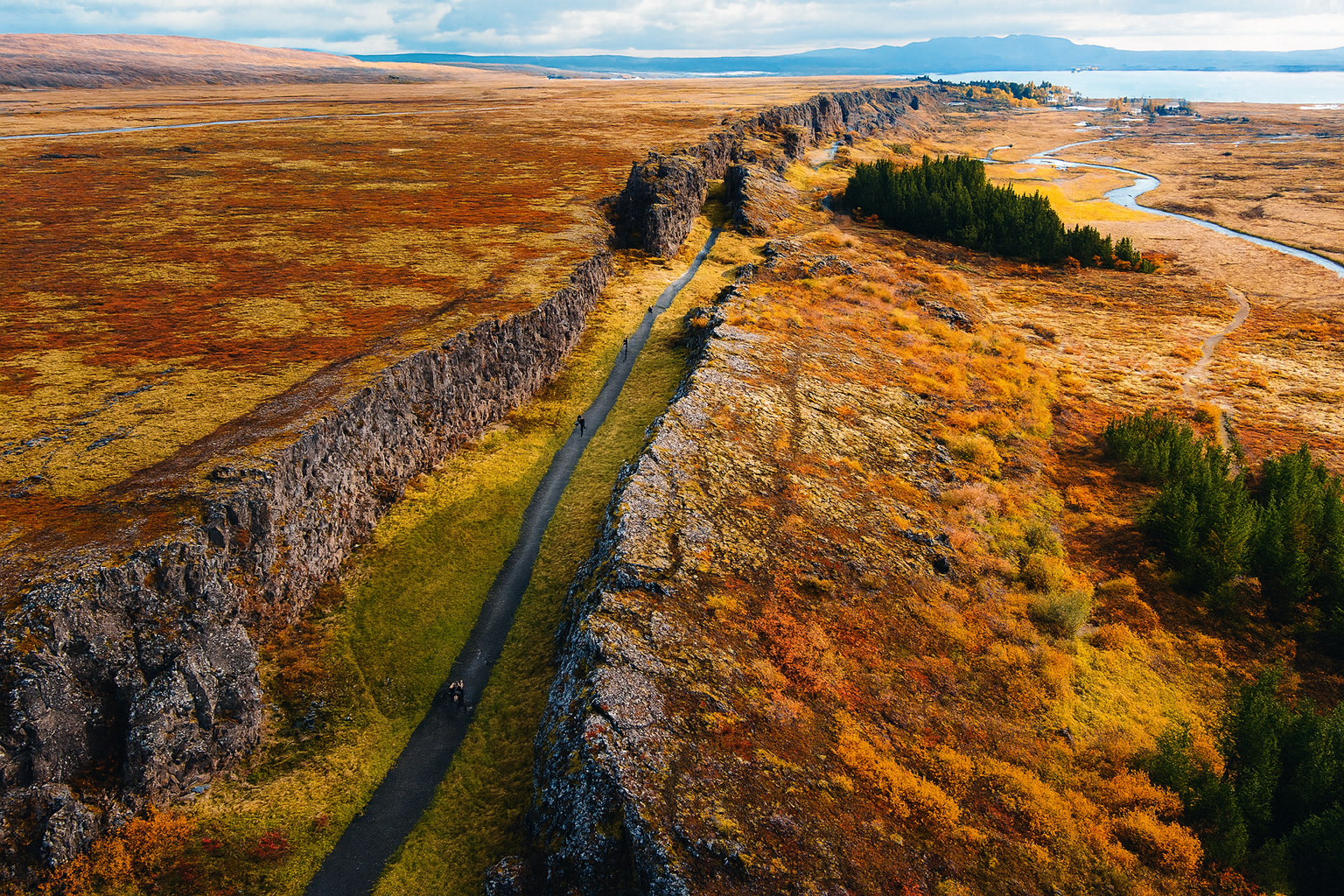
This tectonic activity has sculpted the park’s dramatic terrain: sheer cliffs, sprawling lava fields, and the shimmering expanse of Þingvallavatn, Iceland’s largest natural lake. It is a landscape in motion, still changing, reminding visitors that the Earth is alive beneath their feet.
While the geology of Þingvellir is awe-inspiring, its cultural significance is equally profound. In 930 AD, Iceland’s first settlers established the Alþingi — the world’s oldest continuous parliament — on the park’s grassy plains. For centuries, this was the site where chieftains gathered to settle disputes, pass laws, and forge the country’s political identity. The Lögberg, or Law Rock, still stands as a symbol of Iceland’s democratic roots.
In this open-air assembly, justice was administered and alliances were made under the watchful presence of mountains and sky. The very land became part of the nation’s political stage, embedding Þingvellir into the DNA of Icelandic identity.
A Landscape of Life
Beyond its cultural and geological importance, Þingvellir is a sanctuary for biodiversity. The clear waters of Þingvallavatn host species found nowhere else on Earth, such as the Arctic char varieties adapted to its unique environment. The surrounding wetlands and heathlands provide habitat for a variety of birdlife, from the great northern diver to the harlequin duck.
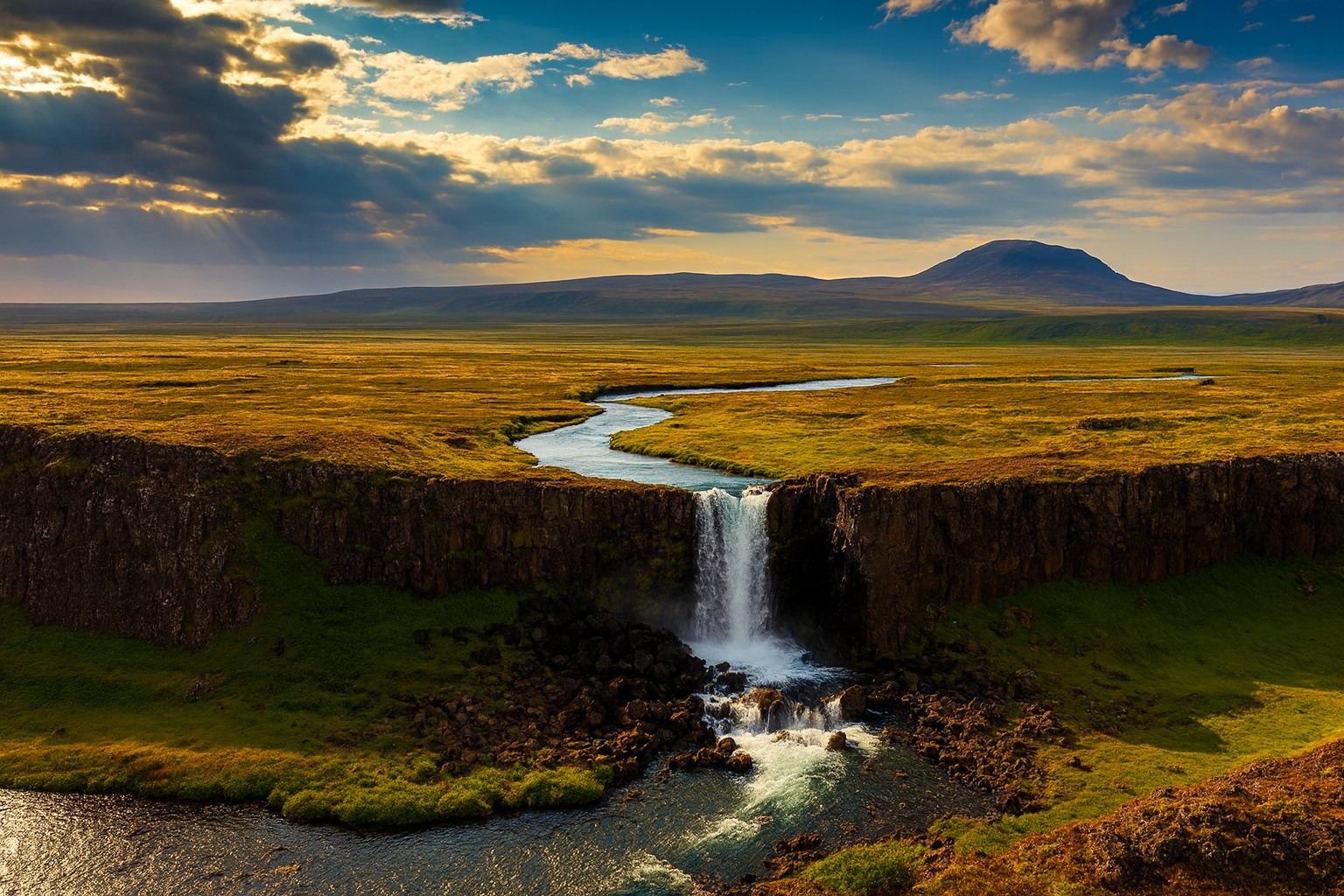
The park’s ecological integrity is carefully protected. Fishing is regulated, tourism is managed, and every snorkeler entering Silfra must pass through strict equipment cleaning protocols to prevent the introduction of foreign species.
Guardianship Through UNESCO
UNESCO recognition has fortified Þingvellir’s status as a protected treasure. The designation ensures international support for conservation efforts, sustainable tourism, and educational outreach. It also binds Iceland to a promise — to safeguard both the geological marvels and the cultural narratives that have unfolded here for over a millennium.
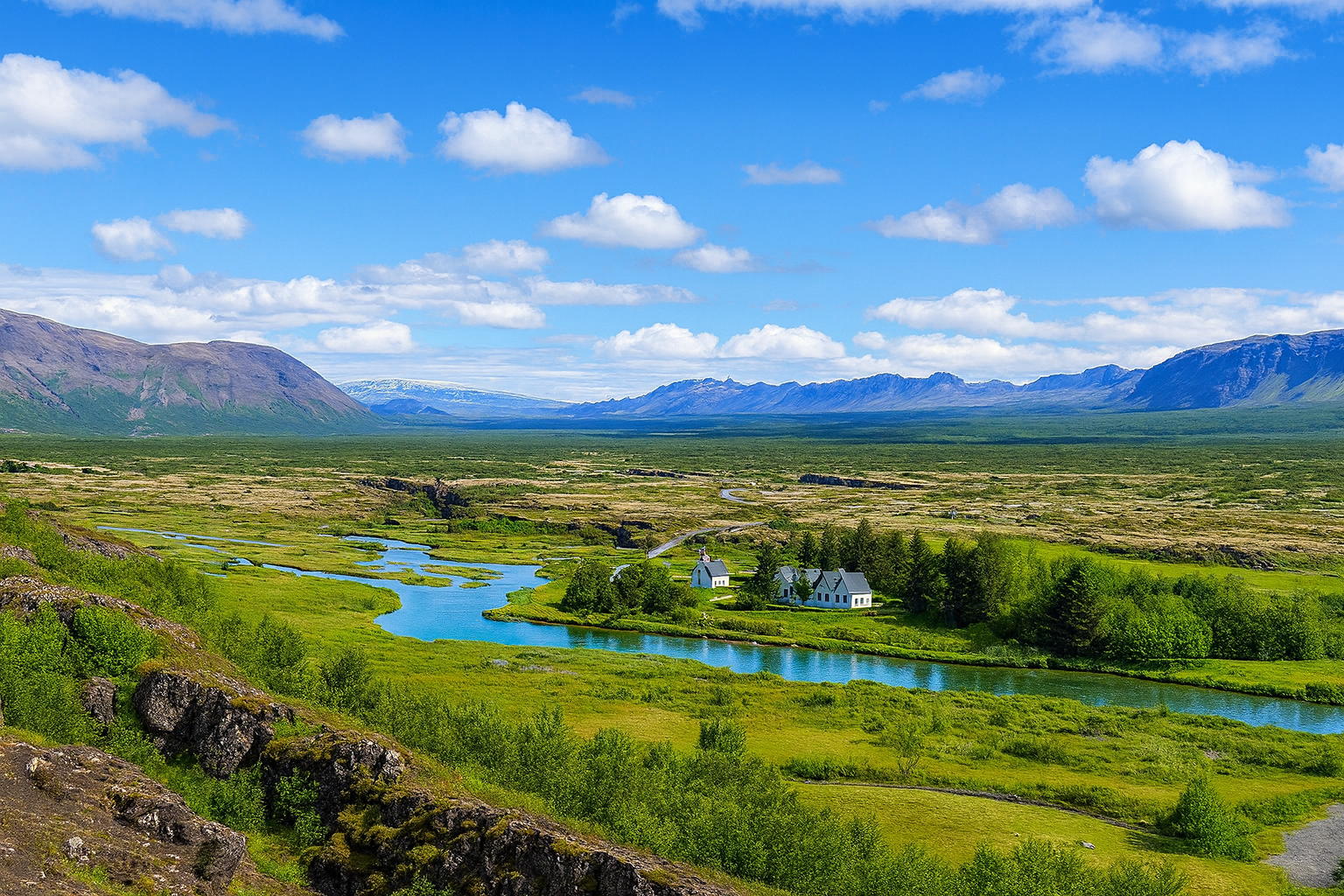
Visitors are not just tourists in Þingvellir; they are witnesses to a living archive. Each step across the lava plains, each gaze into the rift, is a journey across both space and time.
Exploring Thingvellir
Þingvellir National Park offers a wide range of experiences for travelers seeking both adventure and cultural discovery. Visitors can choose from guided and self-led tours that highlight the park’s geological wonders, rich history, and natural beauty.
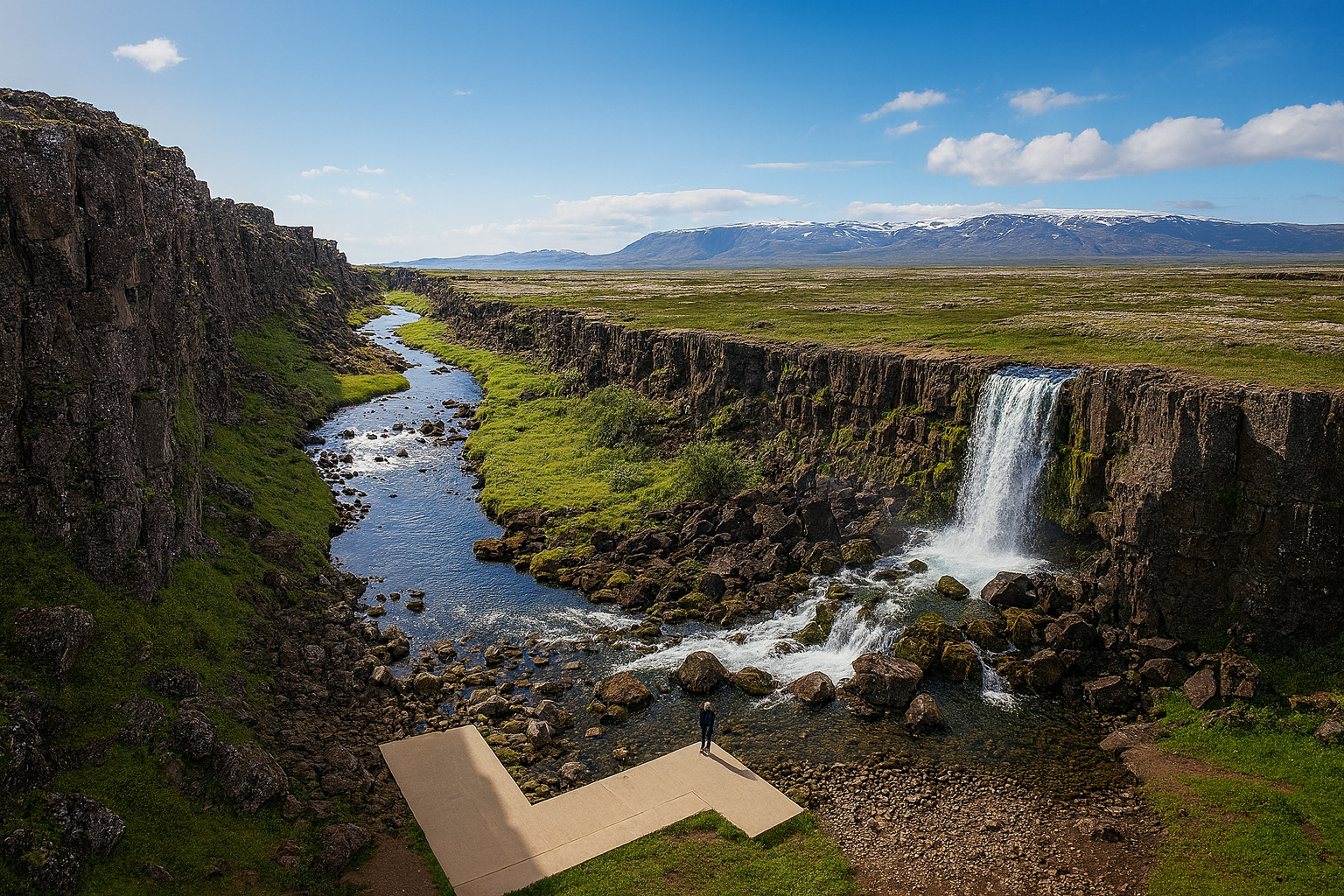
The park is accessible year-round, though each season tells its own story — from summer’s green expanses to winter’s snow-draped stillness. In every season, Þingvellir’s message is the same: this is a place where Earth and humanity meet in profound dialogue.
Diving and Snorkeling in Silfra
One of Þingvellir’s most sought-after activities is exploring the Silfra fissure. Year-round snorkeling and diving tours allow participants to float between the North American and Eurasian tectonic plates in crystal-clear glacial water. Tours include dry suits, equipment, and professional guides trained in cold-water safety.
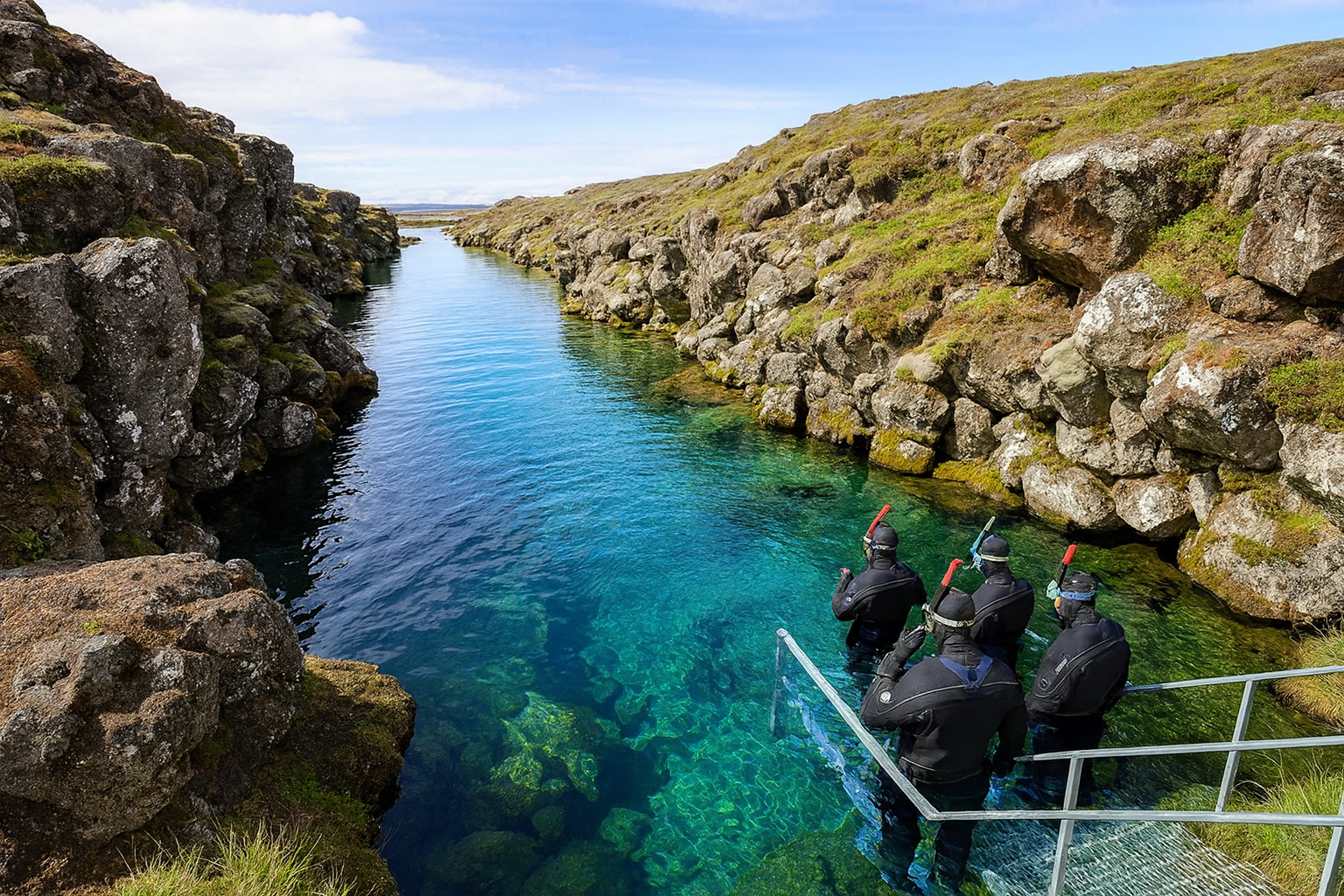
Photography and Sightseeing
Day trips from Reykjavík often combine Þingvellir with other Golden Circle highlights such as Geysir and Gullfoss. Private tours cater to travelers seeking flexible itineraries with extra time for photography or lesser-known park locations.
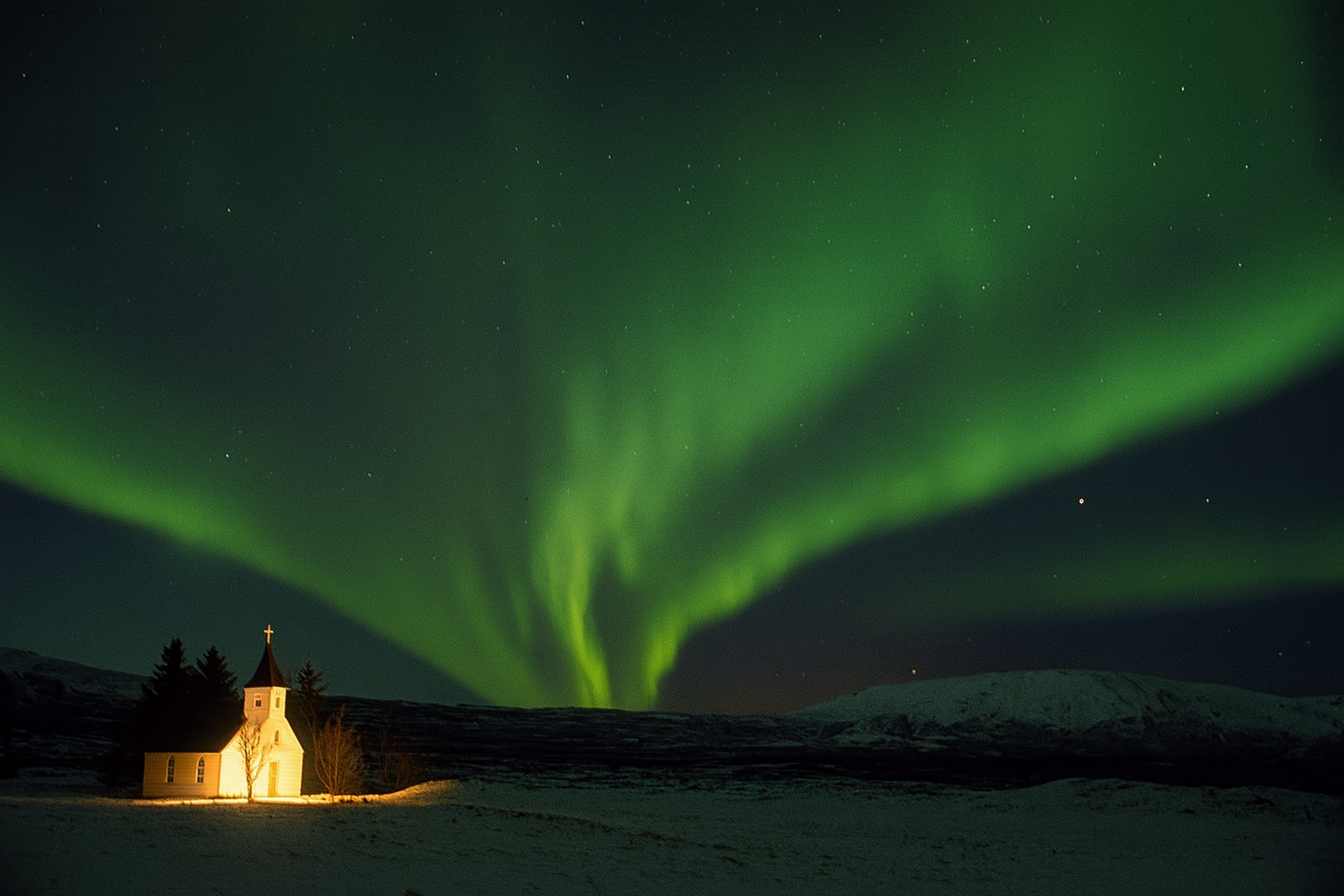
Winter Adventures
In winter, Þingvellir transforms into a snowy wonderland. Snowshoe tours, northern lights photography trips, and winter hiking experiences offer a unique perspective on the park’s landscapes under the aurora borealis.
Whether exploring on foot, in the water, or behind a camera lens, Þingvellir National Park provides diverse activities that connect visitors with both Iceland’s natural wonders and its deep cultural roots.
